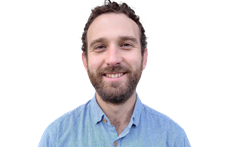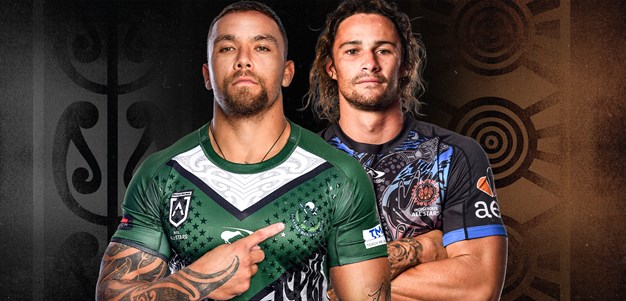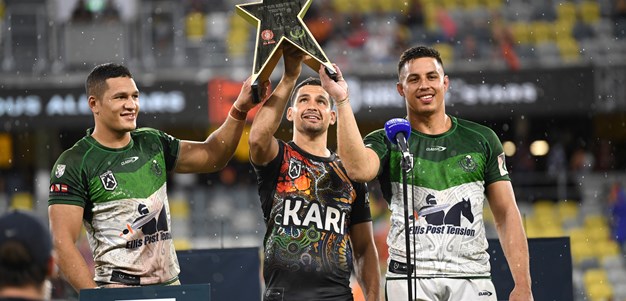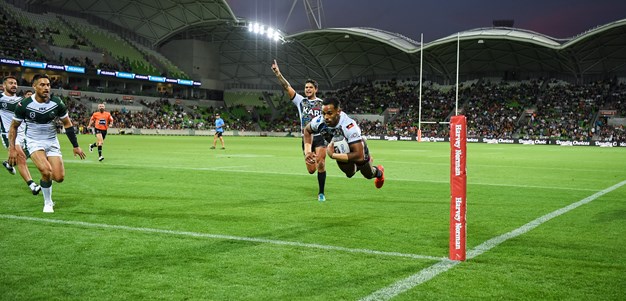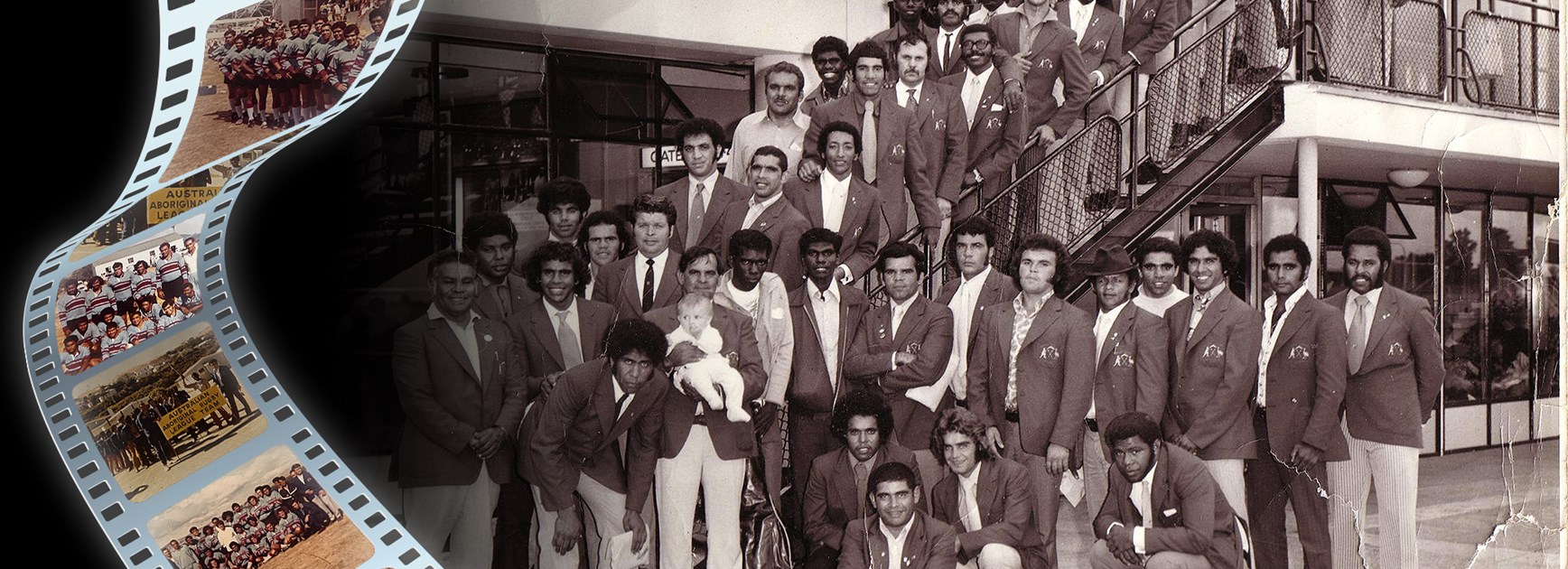
When whispers of plans to assemble a national Indigenous team to tour New Zealand began to circulate through mobs in 1972, the idea was met with a healthy dose of scepticism by many.
While an Indigenous club side – the now famed Redfern All Blacks – had made a historic trip across the Tasman the year prior for organised games, a combined Australian side had never been formed for an overseas trip.
Indigenous rugby league at the time operated in defined geographical siloes and was insular by nature, with even organised state-wide tournaments like the Koori Knockout having only just been started.
The reality of bringing players together from the three main epicentres of New South Wales, Queensland and Northern Territory presented a logistical nightmare, and an expensive one at that.
But as plans continued to build in momentum, thanks to the tireless efforts of an organising group which included the incomparable Aboriginal activist ‘Uncle’ Charlie Perkins, the distant dream moved closer to reality.
Trials took place in both New South Wales and Queensland in the coming months, culminating in a ‘Probables’ v ‘Possibles’ day held in Kempsey on the NSW mid north coast, from which the first ever national Indigenous side to play outside of Australia was formed.
What they did next changed the course of Indigenous rugby league forever and created a path from which the Indigenous All Stars squad that will play their Māori counterparts next Saturday can be traced back to.
Aboriginal and Torres Strait Islander viewers are warned that the following article may contain images of deceased persons.
The long road to New Zealand
The tour had attracted interest from some of the biggest names in Indigenous rugby league at the time, with Ron Mason (Penrith) and Bruce Stewart (Eastern Suburbs), who were both playing in the NSW top-flight, along with Wally Tallis – the father of Queensland great Gorden Tallis – whose career had included a stint in the UK with Leigh, joining the group.
There was a cluster of brilliant young talent spread through the rest of the squad too, and in the years which followed the tour, players including Ambrose Morgan (South Sydney), Terry Wickey (Penrith and Canberra) Thomas Moylan (South Sydney) and Les Drew (NSW Country) would all play top-flight football in Australia.
Organisers had fought to receive endorsement from the Australian Rugby League to wear green and gold jerseys and funding for the tour, both of which they felt they were entitled to as a national team representing the country.
The offer of $190 in funding from the ARL, for a tour which cost around $14,000, did little to help, while it was flat-out 'no' when it came to wearing the traditional colours of Australia.
In response, Phillip Hall, one of the managers on the tour, recalls telling the powers that be that “you couldn’t get any more Australian than us”, before, in a somewhat ironic twist, the group ended up wearing blue and maroon jerseys similar to those worn by the original Australian team of 1908.
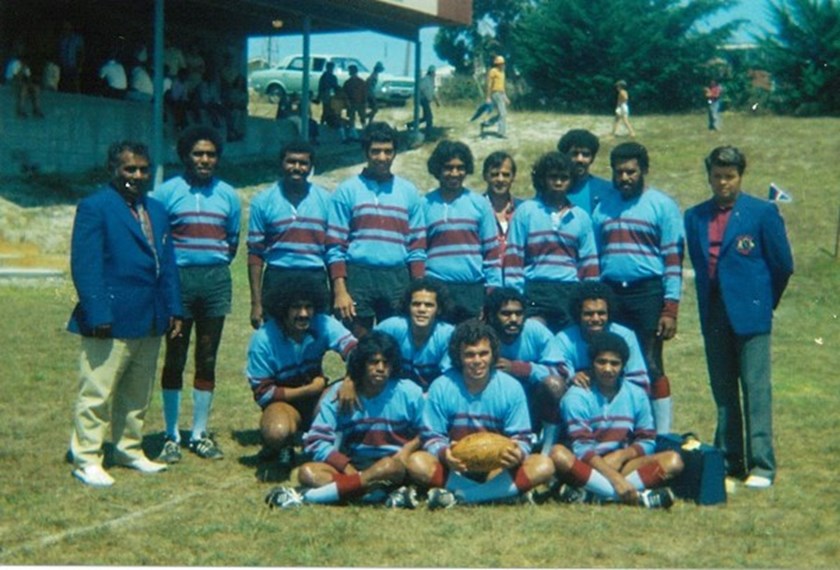
Funding, meanwhile, was secured through the National Aboriginee Sports Foundation.
While they were shunned by many they encountered, the tourists were buoyed by a gesture from some of the biggest names playing in the game at the time, with future Immortals Arthur Beetson, Bob Fulton and Graeme Langlands, along with Kangaroos vice-captain Bob McCarthy and Indigenous great Eric Simms paying them a visit before they left for New Zealand.
“It was fantastic for us, most of us had only heard about those guys before that day. Having some white fellas there was good too, they were non-Indigenous players we looked up to, and for them to talk to us and encourage us was special,” tour member Francis Tappin tells NRL.com.
On departure day in early February a handful of players who had been selected didn’t turn up at Mascot Airport, leading to Larry Hoskins, who had come to wish the team well, being hurriedly sent away to grab boots and clothes to join the tour as a player.
On the plane nerves got the better of some, with most of the squad flying for the first time in their lives.
“I’m from Redfern and overseas to me back then was Manly,” tourist Allen Madden tells NRL.com.
We didn’t know where to look on the plane, it was a long bloody swim if we went down. We should have all been wearing kimbies (diapers). There was always a line up for the toilet, I’ll tell you that.
Allen Madden 1973 Indigenous touring player
Hall added that by the time they landed in Auckland only a handful of players had remained in their assigned seats.
“They all wanted window seats at first, but by the end of it about 25 of them were sitting in aisle seats so they didn’t have to see what was happening outside.”
Once in New Zealand, the squad – which was split into a top side and a reserve team and accompanied by a group of cultural performers from the Northern Territory – played nine games each in the space of 10 days, with the top group picking up seven wins on a whirlwind trip which spanned well over 10,000kms, taking in games in Auckland, the Bay of Plenty, Wellington and Canterbury.
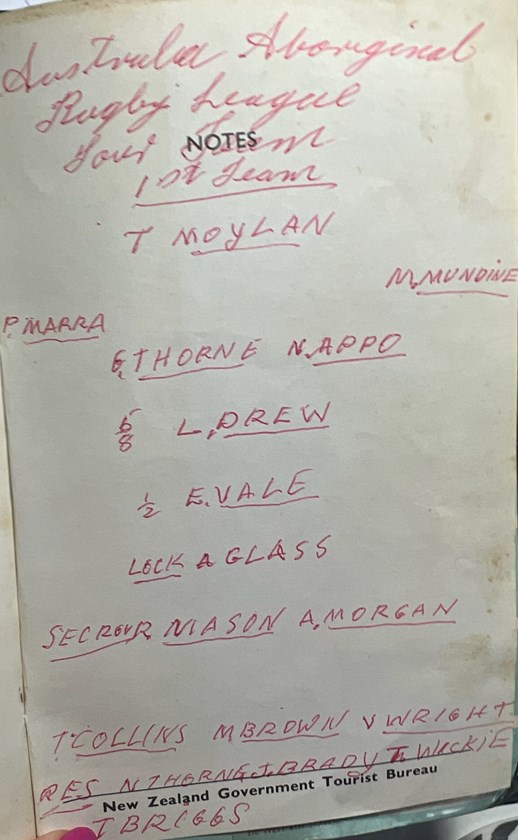
While they couldn’t have dreamed of one day appearing on a stage like that which the Indigenous All Stars will be part of on February 11 at Rotorua International Stadium, centre Neil Appo said most were aware that they were doing something significant.
“That was the start of everything. We opened up a lot more opportunities for Indigenous teams to tour afterwards,” Appo said.
For others like Torres Strait Islander Patrick Marra, it was the chance for a bunch of Indigenous blokes – many of whom were part of the Stolen Generations – to achieve an honour which seemed impossible for much of their lives.
“I never thought I’d get to play for my country. Thought I might get to play for my state, but not my country, never," Marra said.
The start of an enduring bond
In New Zealand the tourists were warmly received and in many cases treated with a level of respect not always afforded to them in their own country.
“Every little town we went to they knew the bus was coming, and there’d be people out on the street,” touring member Victor Wright recalls.
“When we arrived stuff got put on for us. A hāngī (food cooked in an earth oven), entertainment, and we’d be out all day before our games seeing the parts of New Zealand we wanted to see.”
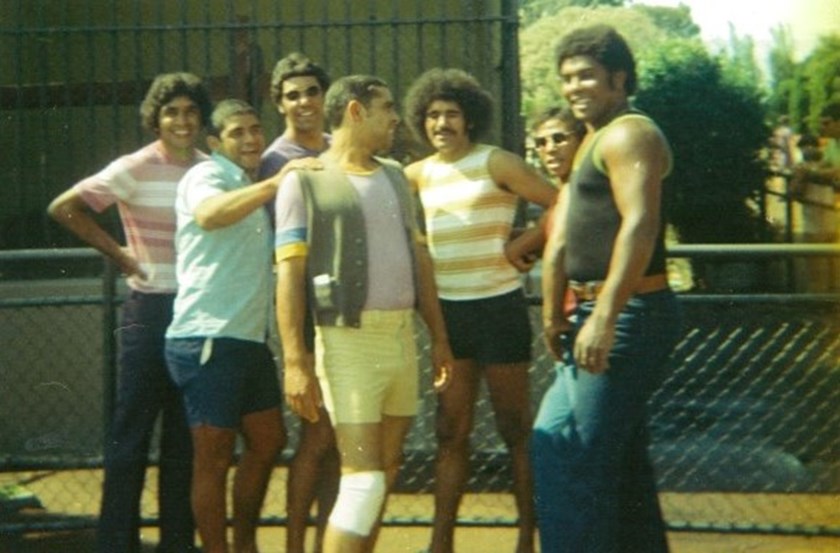
The group found particular kinship with the Māori players and families they encountered, often bonding over shared cultural customs and beliefs.
“The people couldn’t have been more welcoming,” centre Michael Anderson says.
It was a pleasure to go to a country where people looked at you but didn’t judge you for who you were and try and second guess which nationality you were.
Michael Anderson 1973 Indigenous touring player
“The Māori community welcomed us with open arms, and they have a terrific way of welcoming people. It was amazing to be with another racial group we bonded with.”
In one case a couple of players got on so well with their local cab driver that they ended up spending an evening driving for him and picking up fares, while he stayed back at the team accommodation for a beer with the rest of the squad.
The Indigenous group left a lasting impression on their hosts too, not least for the way the cultural performers who flanked them on the tour seemed to change the weather at will.
“Mid-summer, baking hot afternoon, and they did this rain dance. A short while later it started to pour with rain and none of us could believe it. It was like this ghost had arisen.” recalls Graeme Murdoch, a winger in the Te Atatu team which played the Indigenous in Auckland.
Wright picks up the story further down the North Island.
Everywhere they danced it rained. The best was in Rotorua. It took us half an hour to drive to the game but three hours on the way back, because the roads were so flooded and we had to take the long way around.
Victor Wright 1973 Indigenous touring player
An emotional reunion
Next week most of the surviving members from the class of 1973 will gather in Rotorua for a reunion which will coincide with the Harvey Norman NRL All Stars clash.
They’ll remember their mates who have passed on, reminisce about the good times and watch with pride as the Indigenous All Stars, the side which now represents the fruit of their labours 50 years ago, runs out and showcases their culture.
“Every time we see those guys take the field as a group it brings a kind of choking sensation to your throat, and you’re fighting back tears of joy because you are proud,” Anderson tells NRL.com.
“It’s quite overwhelming to see them play, considering the circumstance of those days in 1973.”
The first Indigenous War Cry at the All Stars
The 1973 Indigenous touring squad
Albert Torrens
A scrappy front-rower who relished the chance to go head-to-head with some of the imposing Kiwi forwards on the tour, Torrens hailed from the Casino RSM club in the Northern Rivers area of NSW. Now retired and living in Sydney, he is an avid follower of the Broncos in the NRL
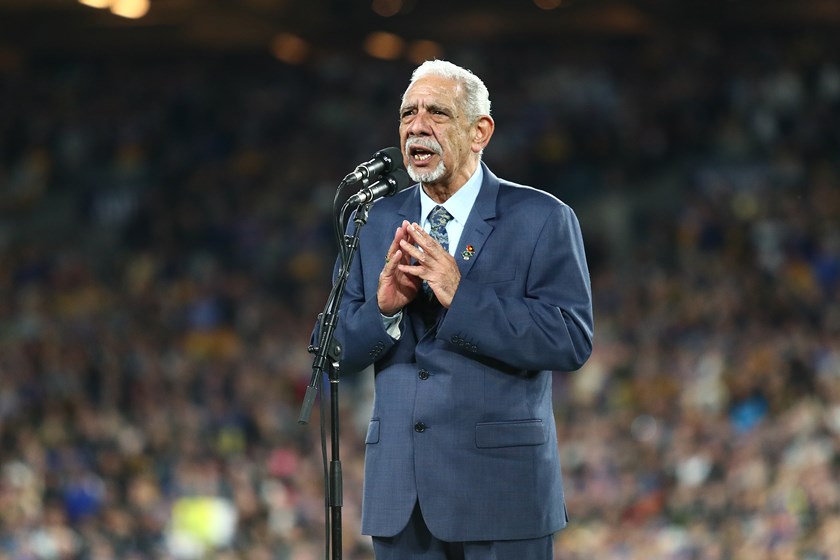
Allen Madden
Used at both fullback and centre on the tour. A father of 10, he played all of his senior footy with the Redfern All Blacks until hanging up his boots at 39. He retired from his role as a sites officer for the Metropolitan Local Aboriginal Land Council in 2009 and still lives in Redfern now. He has performed the Welcome to the Country for some of the biggest events hosted in Sydney – including last year's Telstra Premiership Grand Final and visits from Pope Benedict, Elton John and Ed Sheeran.
Ambrose Morgan
In a team which lacked size compared to most they faced on the New Zealand tour, 1.8 metre tall Morgan, who played at around 100kgs, was the exception. Dubbed the ‘King of Redfern’ by members of the local league community, the second-rower or prop captain-coached the Redfern All Blacks. Two years after the tour he was called up by South Sydney to play against eventual champions Eastern Suburbs in an Amco Cup match. Later that year Morgan was tragically killed in a shooting in Sydney.
Archie Glass
An uncompromising player who teammates recall instilled fear in opponents everywhere they played. The year following the tour Glass helped the Redfern All Blacks to their first South Sydney District premiership title. The Redfern All Blacks A-Reserves award for best tackle is now named in his honour.
Bruce Stewart
A winger with blistering pace, Stewart was a well-known player by the time the tour rolled around. ‘Larpa’ broke onto the first-grade scene in 1967 with Eastern Suburbs and represented NSW Country in 1970 out of Wagga, with his opponents in the City side that day including Graeme Langlands, Bob Fulton, Ron Coote, Bob McCarthy and Arthur Beetson. His son Corey played for both Penrith and Eastern Suburbs in the early 1990s. Larpa passed away in 2012.
Clarke Scott
A teenage five-eighth whose first assignment in New Zealand was marking up against a current Kiwi international in Dennis Williams. Selected out of the Warragamba Wombats club, Scott returned to play there and later for St Marys. Now based in Penrith, he has spent the last 30 years working in Aboriginal-identified healthcare and currently manages a drug and alcohol program.
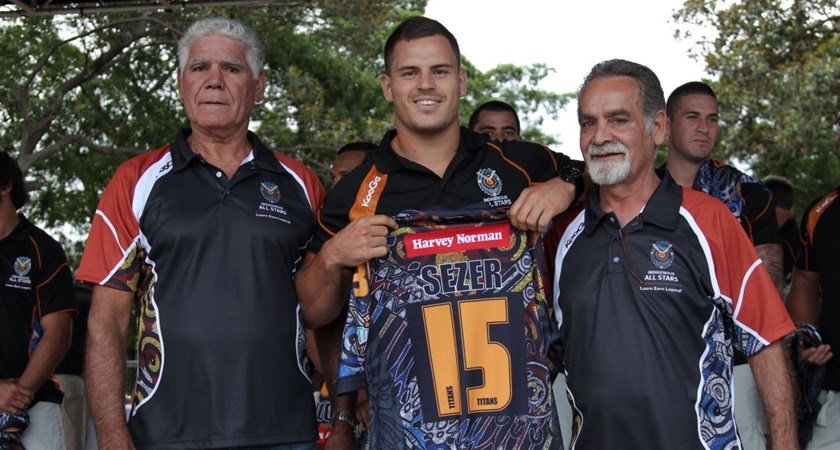
Desi Illis
Picked out of Townsville to be part of the tour, Illis was a no-nonsense hooker. After returning home he worked as a transport officer for both the Aboriginal Legal Service and in the Aboriginal medical services field, before his own health struggles forced him into retirement 12 years ago. He continues to live with wife Donah in Townsville.
Don Carter
Part of the Northern Territory connection in the squad, alongside his cousin Phillip de la Cruz. Carter played his club football with the Warratah Wallabies and Nightcliff Dragons. Among his work later in life, much of which was in Government departments, Don was a barman at the Cronulla-Sutherland Leagues Club.
Eddie Vale
Just 19 on the tour, Vale went on to enjoy a long career with the Port Macquarie Sharks and Zetland Magpies – playing under fellow ’73 tourist Victor Wright at the latter club – while he also represented Newcastle in the Amco Cup. He now lives in Kempsey where he and his wife have spent years as foster carers.
Francis Tappin
One of four Torres Strait Islanders in the touring squad, Tappin was used right across the backline in New Zealand. He played almost all of his club football in Townsville, where he is now retired after a long career advocating for the advancement of Torres Strait Islanders in Australia.
Geoffrey Thorne
A versatile back who teamed up with his older brother Neville in a number of games in New Zealand. After the tour he moved from the NSW town of Walgett to Bathurst, where he enjoyed success on the footy field which included winning three-straight premierships between 1979-81 with Bathurst Charlestons and Bathurst Railway, before retiring.
Jeffrey (Dale) Hennaway
A strong-running second-rower who was 20 on the tour. Hennaway, who was known by most in league circles by his middle name, Dale, came through the Centrals club in Townsville and later spent a season in The Whitsundays. These days he is retired from work but continues to volunteer as a chaplain and in elder representation.
John Brady
A 23-year-old centre with great short distance speed on the tour, Brady was playing in the Brisbane Indigenous competition at the time of earning his ticket to New Zealand. He later worked for the Brisbane City Council and kept playing football until he was 40. Now retired and living in Sunnybank Hills, Brisbane.
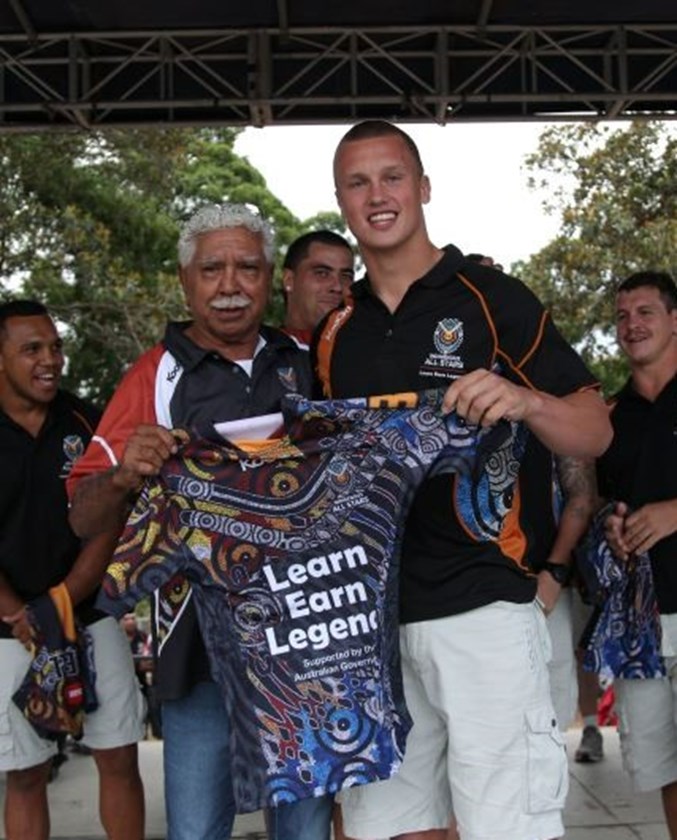
Larry Hoskins
A 23-year-old fullback and winger on the tour, Hoskins was a last-minute addition in the squad after being told to go and find some boots when he showed up at the airport to farewell the squad. A good footballer in his own right, he had trials with the Newtown Jets on a number of occasions in the years which followed the tour, but didn’t manage to break through to the top grade. He kept playing club league in Sydney until the age of 32. Hoskins is now retired and living in Kempsey.
Les Drew
A magical playmaker renowned for his skill and for being incredibly hard to tackle when he ran the ball, he scored twice directly from kick-offs on the tour. Kempsey-born Drew went on to be selected for NSW Country in 1974, playing against a star-studded City side which included Bob Fulton, Ron Coote and Arthur Beetson. He played rugby league up until the age of 49. Drew passed away 12 years ago.
Marshall Brown
A mainstay for the Redfern All Blacks and Koorie United through the 1970s and 1980s, before finishing up with the Campbelltown Ghosts. Brown played hooker on the tour and relished the chance to take on the big Kiwi forwards across the country. Now aged 72, he remains living in Campbelltown.
Michael Anderson
At the age of just 17, Anderson had been picked up by Manly and came through the lower grades with eventual NSW and Australia rep Terry Randall in 1969, before returning home and playing for Walgett. On the tour his tough tackling became a trademark, and he later spent time with Newtown and Wynnum Manly, along with a stint in the Newcastle competition. A qualified lawyer with a degree in economics and commerce, Anderson co-founded the Aboriginal Tent Embassy in Canberra and also worked at the NSW Office of Public Prosecutions.
Michael (Mick) Mundine
An energetic winger who was able to turn a game with his athleticism. He dedicated his working life to the advancement of Indigenous people, which included serving as the CEO of the Aboriginal Housing Company in Redfern and sitting on the boards of the Aboriginal Medical Service, Aboriginal Legal Service and the Redfern Aboriginal Corporation. He is the uncle of former Dragons and Broncos player, turned boxing champion, Anthony Mundine.
Neil Appo
A 19-year-old centre with the skills of a halfback, Appo formed a dangerous edge combination with winger Mick Mundine. After returning home to Queensland he became a bricklayer by trade and continued to star on the footy field with stints at a number of different clubs. Now retired and living in Brisbane, he remains an avid follower of the Broncos in the NRL. His son Nathan Appo is among the main drivers of Deadly Choices, the health promotion initiative of the Institute for Urban Indigenous Health.
Neville Thorne
A powerful second-rower/front-rower who toured alongside younger brother Geoffrey. Aged 25 at the time of the New Zealand trip, he played most of his football in Dubbo and Gundagai in New South Wales and became one of the key men behind the scenes when it came to organising the Koori Knockout. He passed away in the mid-2000s.
Patrick Marra
Bar a short stint in Canberra with Queanbeyan Blues, he played all of his rugby league in Townsville, where he continues to live and work as a youth worker in detention centres. Marra is a regular at Cowboys games.
Phillip de la Cruz
By 1973 de la Cruz had already played against touring international sides from France and Great Britain, as well as representing Papua New Guinea, where he lived and played in 1965. In addition to being one of the standout players on the tour, he was renowned for his great singing voice which kept the squad entertained off the field. In 1988 Phillip was awarded the National Aboriginal Sports Star Award for his contribution to rugby league in the Northern Territory.
Ron Mason
Mason had just finished his debut season with the Panthers in the NSWRL Premiership when he joined the tour. A towering back-rower who grew up working in forestry, he was one of the key forwards on the tour. He went on to play three more seasons with Penrith and played club football until he was 58. Now retired and living in Narooma, NSW.
Steve Ridgeway
The second person ever to become a life member of the Redfern All Blacks, he also served as club president during his time as a player there. In addition to his rugby league talents, he was a golden gloves boxing champion, public speaker, civil rights activist and advocate on Stolen Generation issues.
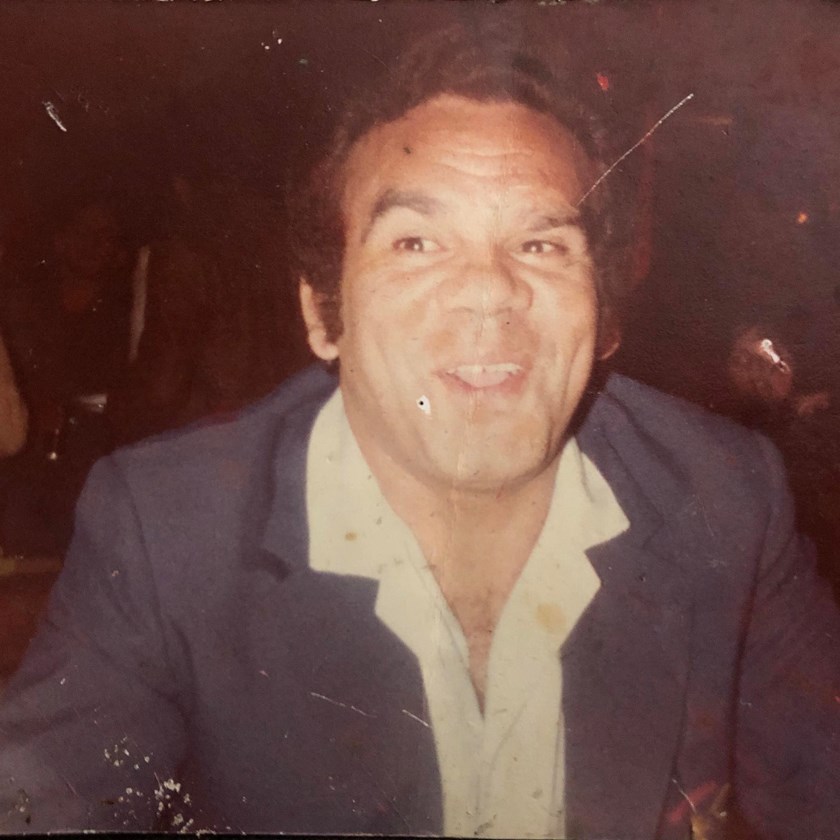
Terry Wickey
An uncompromising half who didn’t take a backwards step, two years on from the tour Wickey began a seven-season career in the NSW top grade which saw him rack up 100 games. He was a mainstay in the halves for the Penrith Panthers between 1975-80, before joining the Canberra Raiders for their inaugural season in 1982, making 10 appearances before retiring from top-flight footy.
Thomas Moylan
An elusive winger who knew how to find his way to the try-line, after returning from the tour he appeared at first grade level for the South Sydney Rabbitohs, making his debut in round 15 of the 1973 season and proving the match-winner a week later when he scored a double in an 8-7 win over Newtown. He appeared again in the top grade the following year before injury ended his first-grade career. Moylan passed away in 2021.
Victor Wright
One of the six founding members of the Annual NSW Aboriginal Rugby League Knockout Carnival. Usually a centre, he played front row on the tour. Now based on the Central Coast, Wright remains a champion for Indigenous rugby league and last year was named the inaugural recipient of Indigenous Community Award. His son Jonathan played nine seasons in the NRL, while daughter Alanah manages the NRL’s Reconciliation Action Plan Program.
Victor Wright named inaugural recipient of Indigenous Community Award!
Wally Tallis
Tallis had already enjoyed an impressive rugby league career by the time the tour was proposed, which included a short stint in the UK with Leigh and representing North Queensland against Great Britain. Standing at 195cm tall and with speed to burn and a booming kick, Tallis, whose son is former Broncos enforcer Gorden Tallis, was primarily a fullback but was so versatile he even spent time in the front row. He died in 2016, but such is his standing in the Townsville area, he has a street named after him outside Queensland Country Bank Stadium where the Cowboys play.
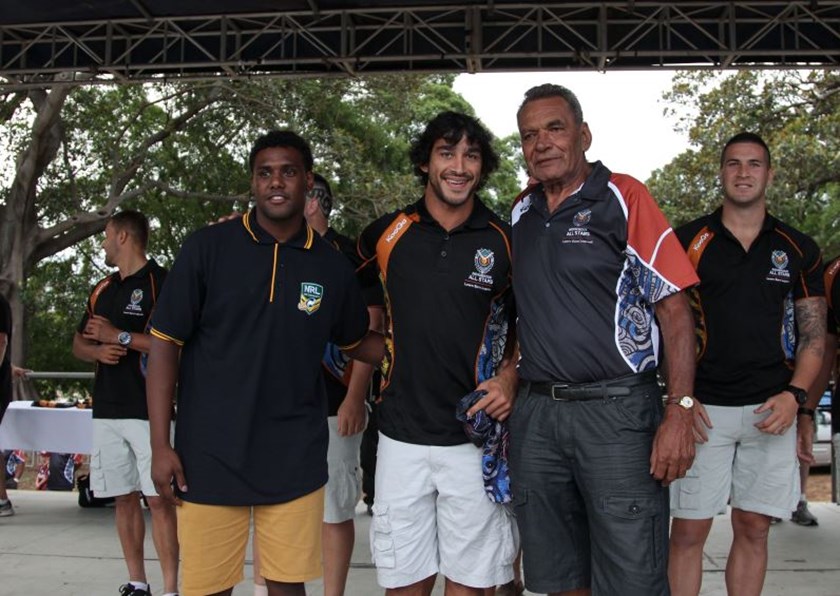
William (Bill) Widders
The youngest player in the squad at just 17 years of age, Widders was playing lower grade football for Newtown at the time of his selection. After returning home he linked up with a bunch of his fellow tourists at the Redfern All Blacks, helping them to their maiden South Sydney District title in 1974. Widders, whose nephew is Eels NRLW coach Dean Widders, went on to become an influential figure in Aboriginal education at the Armidale City Public School. He passed away five years ago.
Despite extensive efforts, NRL.com acknowledges that some touring players may have been missed or were unable to be contacted as part of this article.
